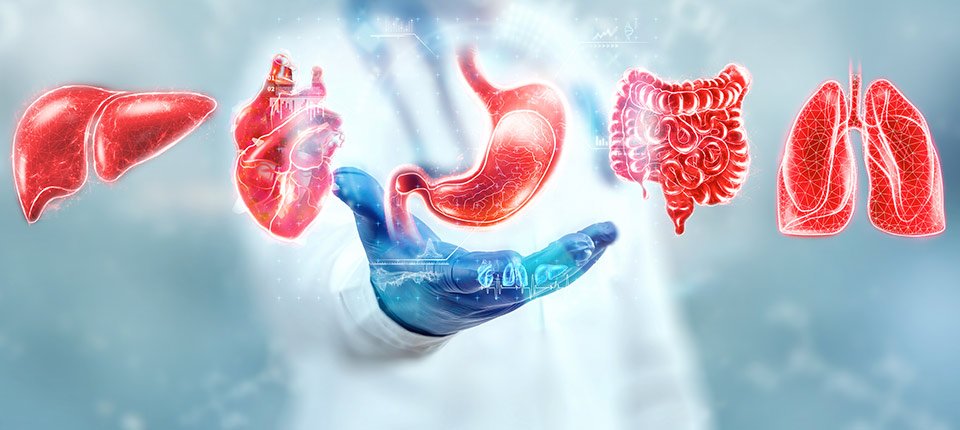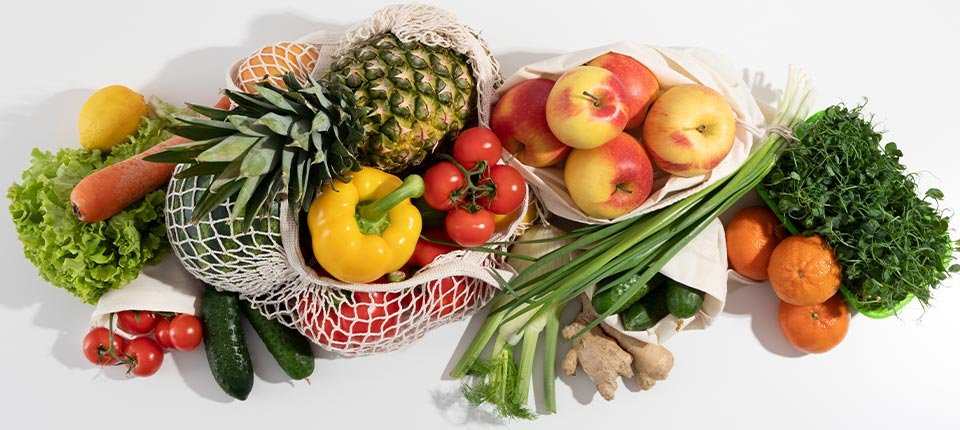- What is Diabetes and its types and symptoms
- What is kidney disease and its symptoms
- What happens inside the body when Diabetes and Kidney diseases affect the body at the same time
- Sugar levels and what normal levels look like
- The role other factors such as high blood pressure, cholesterol, & hypertension play
- The importance of Indian fruits and vegetables in controlling these Diabetes with Kidney diseases
- Diabetes & kidney friendly diet plans in India
- Conclusion
Kidney Disease & Diabetes: Crafting the Right Diet for Indians
If you’re suffering from Diabetes, (Type 1 Diabetes & 2 Diabetes) with Kidney disease, you’re not alone.
According to the Indian Ministry of Health and Family Welfare, about 10.1 crore Indians suffer from diabetes and about 10% of the population is also affected by chronic kidney disease. These two health issues usually go hand in hand and managing both conditions can be challenging, but it is crucial to prioritise a diet that supports overall health.
With India being called the “Diabetes capital of the world” it becomes ever more important to understand the effects.

What is Diabetes and its types and symptoms
Diabetes is a chronic medical condition that affects how your body regulates blood sugar (glucose), which is the primary source of energy for your cells. The hormone insulin, produced by the pancreas, plays a crucial role in this process. When there’s a disruption in insulin production or its effectiveness, it can lead to elevated blood sugar levels, resulting in diabetes.
There are primarily three main types of diabetes:
Type 1 Diabetes: This type is often diagnosed in children and young adults. It is an autoimmune condition where the immune system mistakenly attacks and destroys insulin-producing cells in the pancreas. People with type 1 diabetes must take insulin injections or use an insulin pump to manage their blood sugar.
Type 2 Diabetes: Type 2 diabetes is more common and usually occurs in adults, although it can develop at any age. It is characterized by insulin resistance, where the body’s cells do not respond effectively to insulin. Over time, the pancreas may not produce enough insulin to maintain normal blood sugar levels. Lifestyle changes, oral medications, and insulin therapy may be used to manage type 2 diabetes.
Gestational Diabetes: This type of diabetes occurs during pregnancy when blood sugar levels become elevated. It typically resolves after childbirth, but women with gestational diabetes have a higher risk of developing type 2 diabetes later in life.
Common symptoms of diabetes include:
- Excessive thirst and hunger: Due to increased glucose levels in the blood.
- Frequent urination: As the body attempts to remove excess sugar.
- Unexplained weight loss: Especially in type 1 diabetes.
- Fatigue: Due to the body’s inability to effectively utilize glucose.
- Blurred vision: As high blood sugar can affect the eyes.
- Slow wound healing: Elevated sugar levels can impair the body’s ability to repair itself.
- Recurrent infections: Diabetes weakens the immune system.
It’s important to note that some people may have diabetes without noticeable symptoms, making regular check-ups and screenings crucial for early detection and effective management. Left untreated, diabetes can lead to various complications, such as heart disease, kidney damage, nerve damage, and vision problems. Proper management typically involves lifestyle changes, medication, and regular monitoring of blood sugar levels.

What is kidney disease and its symptoms
Kidney disease, also known as renal disease or nephropathy, refers to a group of conditions that impair the proper functioning of the kidneys. The kidneys are vital organs responsible for filtering waste products, excess fluids, and electrolytes from the bloodstream, while also regulating blood pressure and maintaining essential chemical balances within the body. Symptoms of kidney disease may vary depending on the stage and cause of the condition.
Common signs and symptoms include:
- Fatigue: Kidney disease can lead to anemia, resulting in a feeling of constant tiredness and weakness.
- Swelling (Edema): Fluid buildup can cause swelling in the hands, feet, and around the eyes.
- Changes in Urination: This can include increased or decreased urine production, dark or foamy urine, and the need to urinate more frequently, particularly at night.
- Blood in Urine (Hematuria): Kidney disease can cause blood to appear in the urine.
- High Blood Pressure: Kidney problems can lead to hypertension or worsen pre-existing high blood pressure.
- Loss of Appetite: As waste products build up in the body, it can lead to a lack of appetite and nausea.
- Itching and Dry Skin: Kidney disease can lead to skin problems due to the accumulation of waste products.
- Muscle Cramps and Joint Pain: Imbalances in minerals and electrolytes can result in muscle and bone problems.
Kidney disease can be acute (sudden and short-term) or chronic (long-lasting and progressive). Chronic kidney disease (CKD) is often asymptomatic in its early stages, making regular medical check-ups and kidney function tests essential for early detection and intervention. If left untreated, kidney disease can progress to kidney failure, requiring dialysis or a kidney transplant to sustain life.

What happens inside the body when Diabetes and Kidney diseases affect the body at the same time
When diabetes and kidney disease coexist within the same individual, it can create a complex and challenging health scenario. Both conditions have profound effects on the body, and their intersection can exacerbate each other’s impact.
When diabetes and kidney disease occur together, several key mechanisms come into play:
- Glomerular Damage: High blood sugar levels can damage the tiny blood vessels in the kidneys called glomeruli, hindering their filtration function.
- Albuminuria: Kidney disease often results in the excretion of the protein albumin in the urine, indicating impaired filtration and kidney damage.
- Blood Pressure Elevation: Kidney disease can elevate blood pressure, which is already a common complication of diabetes, increasing the risk of heart disease and further kidney damage.
- Fluid and Electrolyte Imbalances: The kidneys help regulate fluid balance and electrolytes. Kidney disease can disrupt this balance, leading to edema, electrolyte abnormalities, and hypertension.
- Accelerated Complications: The combination of diabetes and kidney disease accelerates the risk of complications like cardiovascular disease, neuropathy, and retinopathy.
Management of both conditions typically requires close monitoring of blood sugar levels, blood pressure control, and dietary restrictions. Ultimately, a holistic approach is crucial to mitigate the combined effects of diabetes and kidney disease on the body.

Understanding sugar levels & the normal levels
Before delving into the intricacies of crafting a suitable diet plan, understanding what normal sugar levels are is essential. Normal blood sugar levels, often measured through fasting blood sugar tests, typically fall between 70-100 mg/dL. These levels can slightly vary depending on the laboratory and the timing of the test.
When it comes to managing diabetes, it is crucial to maintain blood sugar levels within the recommended range. Consistently elevated blood sugar levels can lead to severe complications, including kidney disease. For individuals with diabetes, a target range for fasting blood sugar levels is generally set between 80-130 mg/dL. However, specific targets may vary, so it’s important to work with your healthcare provider to determine the best levels for you.

The challenge of diabetes coupled with kidney when already facing other health issues such as high blood pressure, cholesterol, & stress
A literal case of double whammy if we call it that! Let’s look at 5 five challenges faced by diabetics with kidney diseases with a combination of any other physical ailment.
Complex Medication Regimen: Diabetics with kidney disease may need to monitor their blood sugar, blood pressure, and cholesterol levels, and they might be prescribed medications for each of these conditions. This can lead to confusion, potential drug interactions, and increased costs.
Dietary Restrictions: Diabetics need to monitor carbohydrate intake, while kidney disease patients may need to limit protein, sodium, and phosphorus. Individuals with high blood pressure need to watch their salt intake, and those with high cholesterol levels must be cautious about saturated and trans fats. Balancing all these dietary restrictions while still enjoying a varied and palatable diet can be challenging.
Monitoring and Testing: Diabetics need to monitor their blood sugar, kidney disease patients require frequent tests to assess kidney function, and individuals with high blood pressure and cholesterol issues need regular check-ups. This can lead to a significant time and financial burden, not to mention the emotional stress of continuous medical assessments.
Increased Risk of Complications: Having multiple health conditions increases the risk of complications. High cholesterol can contribute to cardiovascular issues, which are already a concern for diabetics. Dealing with these interrelated health problems can create a sense of helplessness and anxiety.
Stress Management: When you add the complexity of multiple conditions, it can significantly impact one’s mental health. The stress of managing several diseases simultaneously can lead to a lower quality of life, exacerbating the physical symptoms of these conditions.

Importance of Indian fruits & vegetables for people suffering from Diabetes coupled with Kidney diseases
India is an abundant land with different varieties of fruits and vegetables grown across the country! Our naturally grown fruits and vegetables have many benefits for people suffering from diabetes with kidney diseases. Let’s take a look at 5 such benefits:
Rich in Fibre: Many Indian fruits and vegetables, such as spinach, bitter gourd, and guava, are high in fibre. Fibre aids in controlling blood sugar levels by slowing down the absorption of sugar and reducing blood sugar spikes. It also helps maintain a healthy weight, which is vital for diabetes management.
Low Glycemic Index (GI): Several Indian fruits and vegetables have a low glycemic index, which means they have a slower impact on blood sugar levels. For example, foods like ladyfinger (okra) and cucumbers can help prevent rapid spikes in blood sugar when included in the diet.
Antioxidant-Rich: Many Indian fruits and vegetables are rich in antioxidants, like vitamins C and E, which can help protect the kidneys from damage caused by high blood sugar levels. Antioxidants also aid in reducing inflammation and improving overall health.
Potassium Regulation: Kidney disease can lead to an imbalance of electrolytes, including potassium. Certain Indian foods like bottle gourd and ridge gourd are low in potassium, making them suitable choices for those with kidney disease. Proper potassium regulation is vital to prevent further kidney damage.
Nutrient-Rich Variety: Indian cuisine offers a wide range of fruits and vegetables, providing essential nutrients such as vitamins, minerals, and phytonutrients. These nutrients can help boost the immune system, promote overall health, and support the body in coping with the challenges of diabetes and kidney disease.

Diabetes & kidney friendly diet plans in India
Designing an appropriate diet plan for individuals with both diabetes and kidney disease involves careful consideration. Here are some key dietary guidelines to help manage these conditions effectively:
- Control Blood Sugar Levels:
Monitoring blood sugar levels is the cornerstone of diabetes management. Regular blood sugar checks and insulin or medication administration, if prescribed, are essential.
- Limit Protein Intake:
In cases of kidney disease, particularly advanced stages, limiting protein intake might be necessary. High-protein diets can increase the workload on the kidneys. Consult with a registered dietitian or healthcare provider to determine the right protein level for your specific condition.
- Choose Quality Protein Sources:
When you do consume protein, opt for high-quality sources like lean meats, poultry, fish, eggs, and dairy. Plant-based proteins like legumes and tofu are also good choices.
- Control Phosphorus and Potassium:
Kidney disease can lead to imbalances in these minerals. Limit phosphorus-rich foods such as dairy products and cola drinks. Potassium intake should also be managed, so consider reducing potassium-rich foods like bananas, oranges, and potatoes.
- Monitor Sodium Intake:
High blood pressure often accompanies kidney disease and diabetes. Reducing sodium intake by avoiding processed and high-sodium foods can help manage blood pressure.
- Manage Carbohydrates:
Carbohydrate intake should be controlled to help regulate blood sugar levels. Focus on complex carbohydrates like whole grains, vegetables, and legumes while avoiding sugary and refined foods.
- Stay Hydrated:
Adequate fluid intake is important for kidney function. However, individuals with advanced kidney disease may need to restrict fluid intake, so consult your healthcare provider.
- Balanced Eating:
Strive for a balanced diet that includes a variety of nutrients to support overall health. A dietitian can help create a customised meal plan.
- Portion Control:
Controlling portion sizes can help manage calorie intake and support weight management, which is crucial for diabetes and kidney health.
Conclusion
Managing diabetes and kidney disease through diet is a complex process, but it’s essential for improving quality of life and slowing disease progression. Regular monitoring, working closely with healthcare providers, and collaborating with registered dietitians can help create a personalised diet plan tailored to your specific needs. Remember, what works for one individual may not work for another, so a customised approach is crucial in managing these health conditions successfully.
To help you create a personalised diabetes friendly diet plan to control your diabetes and kidney disease, we’re here to help!
FAQS:
To manage blood sugar levels and protect your heart, opt for complex carbohydrates like whole grains and include high-fibre foods like vegetables and legumes in your meals. Incorporate lean proteins, unsaturated fats, and engage in regular physical activity.
The primary focus of your diet should be to control blood sugar levels and reduce the risk of heart-related complications. Limit saturated fats, sodium, and refined sugars, and emphasise foods high in fibre.
To manage cholesterol levels, include foods rich in soluble fibre like oats, legumes, and barley. Consume sources of omega-3 fatty acids such as fatty fish (salmon, mackerel) and use plant sterol-fortified products. Regular exercise also supports cholesterol control.
Use flavorful herbs and spices to enhance taste without excessive salt. Opt for whole-grain versions of staples like rice and bread. Incorporate lean protein sources like legumes and chicken. Prioritise vegetables in your meals and use healthy cooking oils like olive oil.
- Omega-3 fatty acids found in fatty fish reduce inflammation and benefit heart health. Foods high in soluble fibre, such as oats and legumes, help regulate blood sugar and lower cholesterol. Potassium-rich foods, like bananas and oranges, support blood pressure control. Including nuts, rich in healthy fats, is also beneficial.




